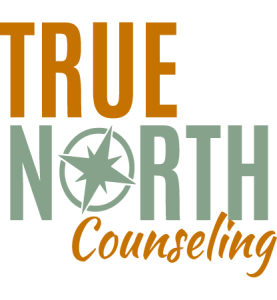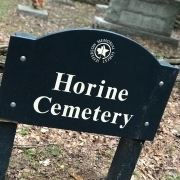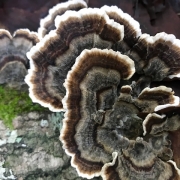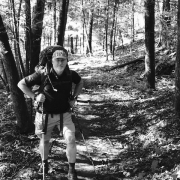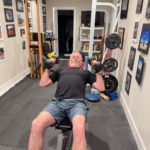The Gift that Keeps on Giving | Healthy Aging Series: S11 E5
If you’ve hiked out west, you’re familiar with Cairns. In Kentucky, you follow a Blaze. Typically Blazes are white marks on trees indicating that you’re on the right trail. There are different colored Blazes for different trails.
Cairns are used to mark a trail when there are no trees, in places like the desert or above the tree line. They’re typically piles of rocks. Usually there’s a Cairn in sight. If you can’t see one you’re off the trail. Stop, go back to the last Cairn, and look for the next one.
The difficulty is when you’re so focused on the trail right in front of you that you forget to look farther down the trail. It happens all the time. On a recent backpacking trip to Canyonlands National Park, I missed the cairn several times. Trevor, my son would say, “Dad, you’re off the trail!” I like to lead. It’s a Dad thing. You spend most of the time looking for cairns.
I did a little reading on the origin of the use of Cairns. I thought it was interesting that one use of a Cairn was for a memorial or burial monument. In a sense, a Cairn is a Messenger. Message: Don’t lose sight of me or you will be lost. Don’t get so caught up, distracted by your current place, that you failed to see what’s up ahead.
I’m sharing some Fairy Tales for Aging in this season. I love Fairy Tales. Really, they are Folk Tales. Almost every culture throughout history has had Folk Tales. I imagine sitting around a warm fire. No tablets, no TV, no Air Pods, no paperback novels. Really, none of the things that we use to entertain ourselves and to preoccupy our children in the modern world. So, you have a story time and you tell stories. Maybe there was someone in the village that acted as the depository of stories. In the evenings they would come by and share a warm beer. I want to share a fairy tale about Cairns of a sort.
Death’s Messengers (Paraphrase by Mark Neese)
In ancient times a giant was travelling on a great highway, when suddenly an unknown man sprang up before him, and said, “Halt, not one step farther!” – “What!” cried the giant, “a creature whom I can crush between my fingers, wants to block my way? Who are you to speak so boldly?” – “I am Death,” answered the man. “No one resists me, and you also must obey my commands” But the giant refused, and began to struggle with Death. It was a long, violent battle. At last the giant got the upper hand, and struck Death down with his fist, so that he dropped like a stone. The giant went on his way, and Death lay there conquered, and so weak that he could not get up again.
“What will happen to me now,” he said, “if I stay lying here in a corner? No one will die in the world, and it will get so full of people that they won’t have room to stand beside each other.”
In the meantime a young man came along the road, who was strong and healthy, singing a song, and glancing around on every side. When he saw the half-conscious man, he went compassionately to him, raised him up, poured water out of his flask for him, and waited till he came round. “Do you know,” said the stranger,” while he was getting up, “who I am, and who it is whom you have helped on his legs again?” – “No,” answered the youth, “I do not know you.” – “I am Death,” said he. “I spare no one, and can make no exception with you, but that you may see that I am grateful, I promise you that I will not fall on you unexpectedly, but will send my messengers to you before I come and take you away.” – “Well,” said the youth, “it is something gained that I will know when you come, and at any rate be safe from you for a long time.”
Then he went on his way, and was light-hearted, and enjoyed himself, and lived without thought. But youth and health did not last long, soon came sicknesses and sorrows, which tormented him by day, and took away his rest by night. “Die, I shall not,” said he to himself, “for Death will send his messengers before that, but I do wish these wretched days of sickness were over.”
As soon as he felt himself well again he began once more to live merrily. Then one day someone tapped him on the shoulder. He looked round, and Death stood behind him, and said, “Follow me, the hour of you departure from this world has come.” – “What,” replied the man, “are you going to break your word? Didn’t you promise me that you would send your messengers to me before coming yourself? I’ve seen none!”
“Silence!” answered Death. “Have I not sent one messenger to you after another? Did not fever come and afflict you, and shake you, and cast you down? Has dizziness not bewildered your head? Hasn’t gout twitched you in all your limbs? Didn’t your ears buzz? Didn’t tooth-ache bite into thy cheeks? Was it not dark before your eyes? And besides all that, has not my own brother Sleep reminded you every night of me? Didn’t you lie by night as if you were already dead?” The man could make no answer; he yielded to his fate, and went away with Death.
Nobody wants to get the Death card in a Tarot Reading. If you’re familiar with the Tarot Deck, Death follows the Hanged Man. These cards are full of symbolism, but not Death. Death follows the Hanged Man Card because that card is inviting you into the upside-down world.
The Hanged Man is seeing life upside down, inviting you to do the same. In the right-side up world, death is the last thing you want to think about, but it is only when we look death in the eyes that we truly begin to live. I’ve taken the Forrest Gump approach to death. “Death is certain. That’s all I have to say about it.”
The problem with the right-side up world is that nobody wants to ponder the first half of that proposition.
One of my favorite chapters in a recent book, “Tarot and the Archetypal Journey,” by Sallie Nichols, is the chapter, Death: The Enemy.
“To accept death,” she writes, “like birth, as a part of life, is to become truly alive.”
Nichols explains that we don’t even want to use the word or say death’s name. “All of us, hesitate to speak the monster name. When we do call someone’s name, he usually turns and looks in our direction. That’s the last thing we want this threatening figure to do.”
There are times when I am lying in bed and reading. Hansel stretched out at the foot of the bed. I don’t dare say his name or disturb him in anyway, because I know he’ll want to come up next to me and knead on my belly and “Get up in my grill,” as I say it. That’s Hansel. That’s not death.
When death gets “up in your grill,” well, it’s different.
The fairytale, Death’s Messengers, doesn’t need much explanation, does it?
In the same way that everything in the universe is aging, everything is dying and more precisely, everyone is dying.
The Death Card is a reminder much like the Latin phrase, Memento Mori.
Look around. Look at your life and the life of your parents and grandparents. Messengers. Read the headlines on your news platform. Messengers.
The message isn’t to prepare you for dying, it’s to prepare you for living.
I saw the doctor this past week and I told her that I needed her help in getting at least 20 more years out of this body. When you look death in the face, you change.
The fear slowly subsides, because you get busy living (Red from Shawshank).
I am rarely sick, but this winter has been the worst. Messengers.
All the aches and pains. Messengers.
Forgetfulness. A messenger.
Gout. Diverticulitis. Hypothyroidism. All with one message. Live life while you can.
That’s the gift that Death gives us. It’s the gift that keeps on giving.
